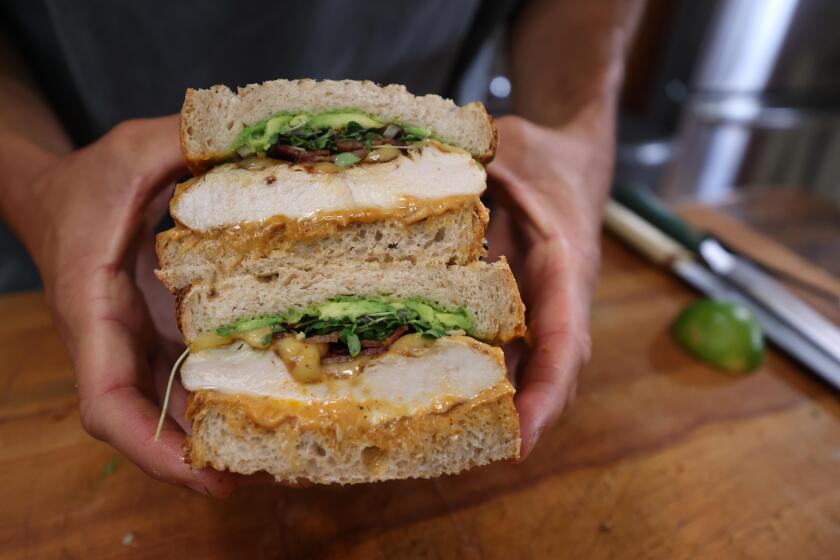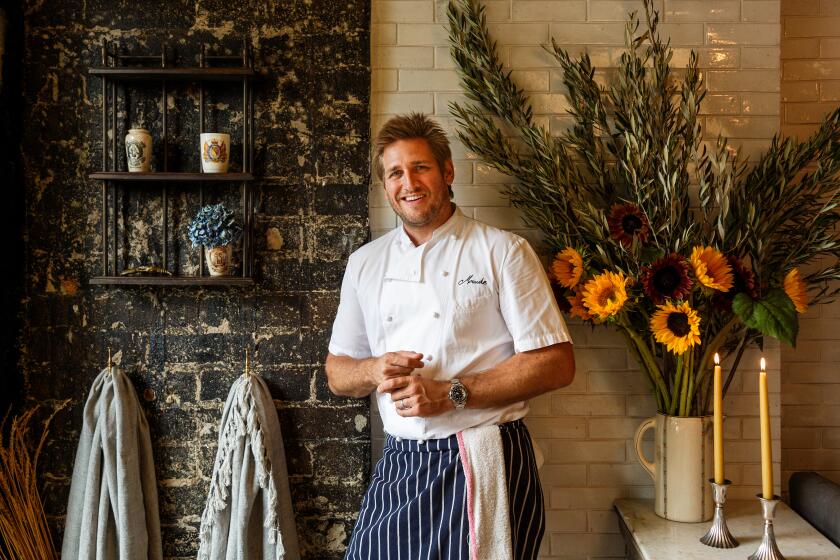Table Shocks and Soy Caviar
Last weekend we attended the Western Foodservice & Hospitality Expo at the L.A. Convention Center to see what new technological marvels restaurants might be trying in the near future. As usual, there was a whole range of mind-bogglers. On one hand, there was Table Shox--miniature shock absorbers designed to reduce table wobble--which sound quite useful. On the other, somebody had invented a beluga-flavored “caviar” made from soybeans. Yikes.
Kitanihon-Kakoh Co. of Japan was promoting its conveyor system, a futuristic deal that delivers sushi or other small plates of food in a hygienic manner via a refrigerated conveyor belt fully enclosed in clear plastic. Little doors open so diners can grab their selections.
SureBeam Corp., a division of Titan Corp. of San Diego, touted a pasteurization process that employs linear accelerators to produce a beam of electrons; played over meat or produce in an assembly line, the beam disrupts the DNA chain in harmful microorganisms such as E. coli 0157:H7, salmonella, listeria and Campylobacter jejuni , making them incapable of reproducing. It uses no radioactive materials (although it falls under the same category as irradiation and needs the same warning label in the eyes of the FDA and USDA), and SureBeam claims its technology won’t alter the taste, texture or nutritional value of food. One day we may all find out.
Filtron Coffee System of Huntington Beach displayed a cold-water coffee brewing system, using a wool felt filter that is supposed to remove most of the oil and acids found in hot-brewed coffee. Because the process uses cold water, most of the caffeine is kept out of the final product as well. The filtration process takes from nine to 24 hours, producing a concentrate that can be added to a cup of hot water to make hot coffee.
Digits, a division of Ecolab Inc. in St. Paul, Minn., showed off a hygiene system designed to make sure restaurant employees’ hands are clean. They rub a lotion-like substance called DigiGlo Fluorescent Indicator on their hands, then put them under an ultraviolet light. Any glowing areas on the hands indicate dirt and possible bacteria. They can wash their hands and try again.
Scotsman demonstrated water and ice dispensers that dispense (as it were) without pushing a button or touching your cup against a lever. A sensor light unit recognizes when a cup is at the ready. This is supposed to help prevent germs from spreading around.
Then there were the air-powered dispenser systems from SHURflo Pump Manufacturing Co. of Santa Ana. They looked like beer taps, except they handle ketchup or mayo.
Isn’t food service science wonderful?
*
Reach Angela Pettera at (310) 358-7647 or pettera@prodigy.net.
More to Read
Eat your way across L.A.
Get our weekly Tasting Notes newsletter for reviews, news and more.
You may occasionally receive promotional content from the Los Angeles Times.










